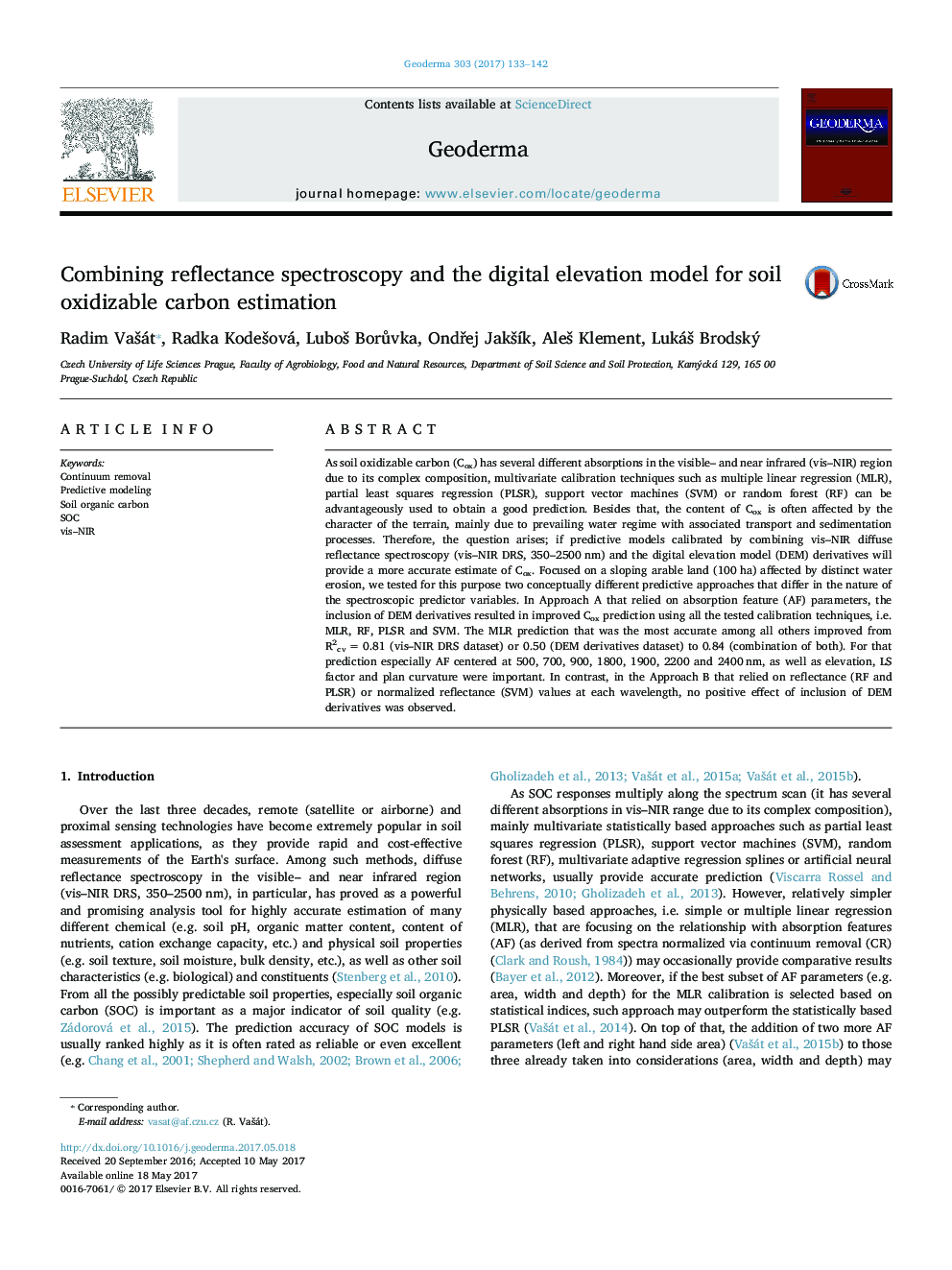| کد مقاله | کد نشریه | سال انتشار | مقاله انگلیسی | نسخه تمام متن |
|---|---|---|---|---|
| 5770610 | 1629414 | 2017 | 10 صفحه PDF | دانلود رایگان |
- Combining vis-NIR spectra and DEM derivatives is promising in Cox prediction.
- Absorption feature parameters as spectroscopic predictor variables played a key role.
- Multiple linear regression is powerful calibration technique in Cox estimation.
- The developed moving window continuum removal makes all spectra consistent.
As soil oxidizable carbon (Cox) has several different absorptions in the visible- and near infrared (vis-NIR) region due to its complex composition, multivariate calibration techniques such as multiple linear regression (MLR), partial least squares regression (PLSR), support vector machines (SVM) or random forest (RF) can be advantageously used to obtain a good prediction. Besides that, the content of Cox is often affected by the character of the terrain, mainly due to prevailing water regime with associated transport and sedimentation processes. Therefore, the question arises; if predictive models calibrated by combining vis-NIR diffuse reflectance spectroscopy (vis-NIR DRS, 350-2500 nm) and the digital elevation model (DEM) derivatives will provide a more accurate estimate of Cox. Focused on a sloping arable land (100 ha) affected by distinct water erosion, we tested for this purpose two conceptually different predictive approaches that differ in the nature of the spectroscopic predictor variables. In Approach A that relied on absorption feature (AF) parameters, the inclusion of DEM derivatives resulted in improved Cox prediction using all the tested calibration techniques, i.e. MLR, RF, PLSR and SVM. The MLR prediction that was the most accurate among all others improved from R2cv = 0.81 (vis-NIR DRS dataset) or 0.50 (DEM derivatives dataset) to 0.84 (combination of both). For that prediction especially AF centered at 500, 700, 900, 1800, 1900, 2200 and 2400 nm, as well as elevation, LS factor and plan curvature were important. In contrast, in the Approach B that relied on reflectance (RF and PLSR) or normalized reflectance (SVM) values at each wavelength, no positive effect of inclusion of DEM derivatives was observed.
Journal: Geoderma - Volume 303, 1 October 2017, Pages 133-142
